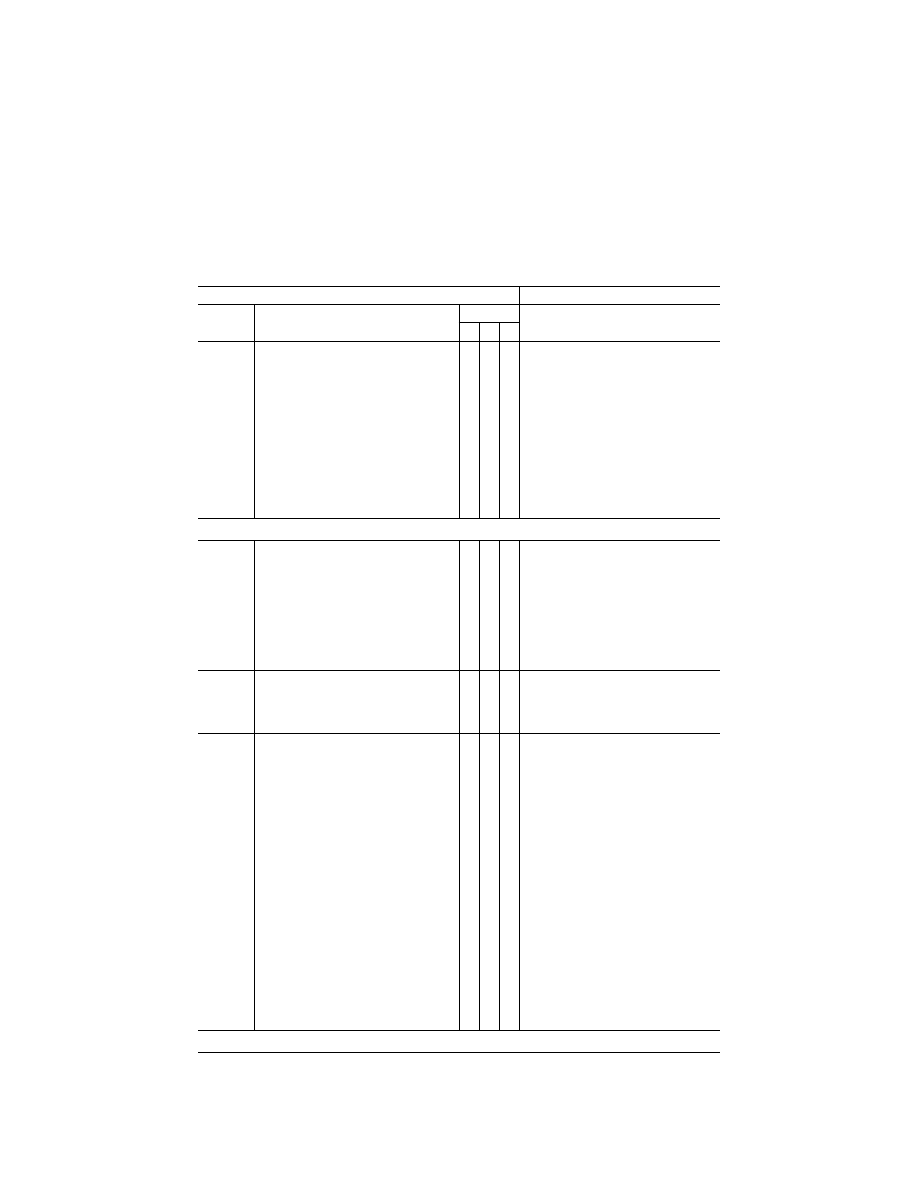
149
Federal Aviation Administration, DOT
Pt. 60, App. B
T
ABLE
B1A—M
INIMUM
FTD R
EQUIREMENTS
—Continued
QPS Requirements
Information
Entry No.
General FTD requirements
FTD level
Notes
4 5 6
1.b. .............
The FTD must have equipment (e.g., instru-
ments, panels, systems, circuit breakers, and
controls) simulated sufficiently for the author-
ized training/checking events to be accom-
plished. The installed equipment must be lo-
cated in a spatially correct location and may
be in a flight deck or an open flight deck area.
Additional equipment required for the author-
ized training/checking events must be avail-
able in the FTD, but may be located in a suit-
able location as near as practical to the spa-
tially correct position. Actuation of equipment
must replicate the appropriate function in the
airplane. Fire axes, landing gear pins, and
any similar purpose instruments need only be
represented in silhouette.
X X
2. Programming
2.a. .............
The FTD must provide the proper effect of aero-
dynamic changes for the combinations of
drag and thrust normally encountered in flight.
This must include the effect of change in air-
plane attitude, thrust, drag, altitude, tempera-
ture, and configuration.
X X
Level 6 additionally requires the effects of
changes in gross weight and center of gravity.
Level 5 requires only generic aerodynamic pro-
gramming.
An SOC is required.
2.b. .............
The FTD must have the computer (analog or
digital) capability (i.e., capacity, accuracy, res-
olution, and dynamic response) needed to
meet the qualification level sought.
An SOC is required.
X X X
2.c. .............
Relative responses of the flight deck instru-
ments must be measured by latency tests, or
transport delay tests, and may not exceed
300 milliseconds. The instruments must re-
spond to abrupt input at the pilot’s position
within the allotted time, but not before the
time when the airplane responds under the
same conditions.
X
X The intent is to verify that the FTD provides in-
strument cues that are, within the stated time
delays, like the airplane responses. For air-
plane response, acceleration in the appro-
priate, corresponding rotational axis is pre-
ferred. Additional information regarding La-
tency and Transport Delay testing may be
found in Appendix A, Attachment 2, para-
graph 15.
•
Latency: The FTD instrument and, if applica-
ble, the motion system and the visual system
response must not be prior to that time when
the airplane responds and may respond up to
300 milliseconds after that time under the
same conditions.
•
Transport Delay: As an alternative to the La-
tency requirement, a transport delay objective
test may be used to demonstrate that the
FTD system does not exceed the specified
limit. The sponsor must measure all the delay
encountered by a step signal migrating from
the pilot’s control through all the simulation
software modules in the correct order, using a
handshaking protocol, finally through the nor-
mal output interfaces to the instrument display
and, if applicable, the motion system, and the
visual system.
3. Equipment Operation
VerDate Mar<15>2010
20:48 Jan 30, 2014
Jkt 232047
PO 00000
Frm 00159
Fmt 8010
Sfmt 8002
Q:\14\14V2.TXT
ofr150
PsN: PC150